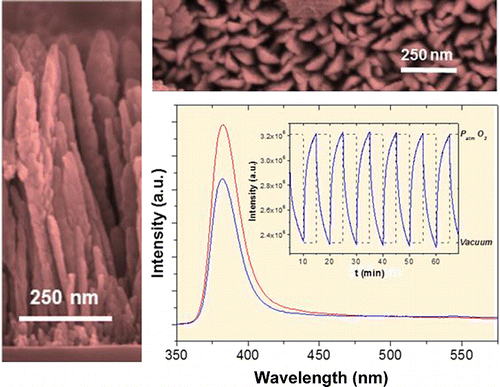J.R. Sánchez-Valencia, M. Alcaire, P. Romero-Gómez, M. Macias-Montero, F.J. Aparicio, A. Borrás, A.R. González-Elipe, A. Barranco
Journal of Physical Chemistry C, 118 (2014) 9852-9859
doi: 10.1021/jp5026027

Transparent nanocolumnar porous ZnO thin films have been prepared by plasma-enhanced chemical vapor deposition. By controlling the H2/O2 ratio in the plasma gas, the deposition conditions were optimized to obtain an intense exciton emission at around 381 nm and virtually no luminescence in the visible region associated with electronic states in the gap. The intensity of the exciton band varied significantly and reversibly with the partial pressure of oxygen in the environment. This behavior and its variations with temperature and water vapor sustain the use of these thin films as photonic sensors of oxygen. Further experiments in liquid water show that fluorescence intensity also varies with the amount of dissolved oxygen even for concentrations lower than 0.02 mg/L where commercial oxygen galvanic sensors show limited sensitivity. These results and the use of ZnO as photonic sensor of oxygen are discussed by assuming a classical mechanism involving the photoactivated adsorption of oxygen when this oxide is irradiated with UV light during its fluorescence interrogation.

